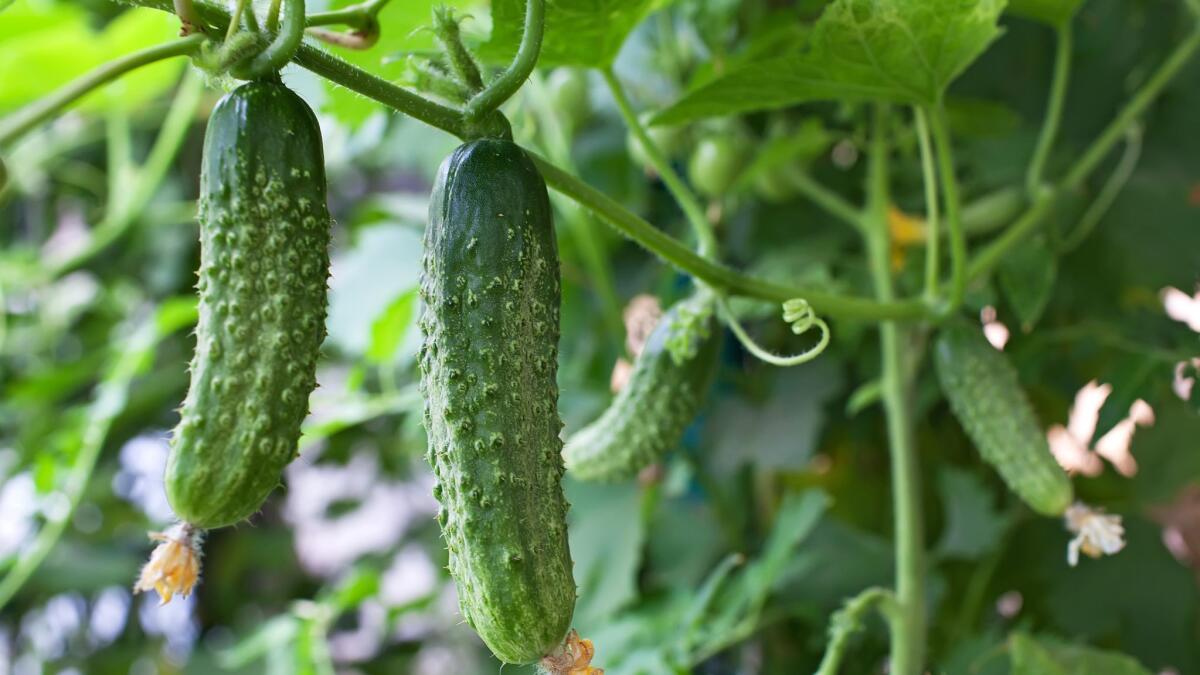What to do in your garden in July? Less is more
The heat arrived early this year, so we are well into summer gardening. Work in the garden early and late to avoid the midday sun. Wear a hat and sunscreen. Long sleeves are good too.
Now, let’s get to work:
--Soft, brown spots on the bottoms of tomatoes and squash are “blossom end rot,” which is the result of uneven watering. Unlike ornamental plants, vegetables need consistently moist (not wet) soil. Water more frequently, and mulch garden beds with straw (not hay) to help hold moisture in the soil. Pick off damaged produce. It won’t recover.
--Time to solarize! Use clear (not black) plastic spread low and tight against the ground to superheat the soil to kill lawns and other low-growing grasses, perennials and annuals, including weeds. In six to eight weeks, they’re dead. (For more details, watch the “Bye Bye Grass” episode at agrowingpassion.com.)
--Less is more when it comes to summertime care of water-wise plants in the ground, both native and exotic. Don’t prune. Don’t overwater. Don’t fertilize.
--Notice how our chaparral-covered hillsides are brown at this time of year. That’s California’s natural cycle. Most native plants are active in fall, winter and spring; they sleep through summer.
--Established native garden plants should need no irrigation through summer. Newly planted natives need periodic deep watering.
--Spritz the leaves of natives and exotic ornamental garden plants to remove accumulated dust and dirt. Dusty, dirty leaves attract spider mites.
--Plant South African bulbs like white-, coral- or pink-flowering Watsonia; deep purple or intense pink Babiana, red, orange and yellow flowered Sparaxis. These water-wise bulbs go dormant to survive the long, hot, dry summer. In early fall, they poke new leaves out of the ground, then bloom next spring.
--Keep soil dry around water-wise shrubs and trees. Warm, wet soil encourages Phytophthora and Fusarium wilt, two fungal diseases that kill plants, especially those in the Protea family such as Grevillea, pincushions (Leucospermum), conebushes (Leucadendron), Banksia, Protea, Hakea and others.
--Keep up with mulch. Use wood mulch for ornamental plants, rock mulch for succulents, straw mulch for the vegetable garden. Mulch holds water in and keeps weeds out.
--Don’t be fooled into using weed cloth under mulch. Weed cloth does not reduce weeds and in fact harms the soil and the beneficial microbes that live in soil.
--A 3-inch-thick layer of mulch keeps weeds from sprouting and as wood-based mulches break down, they improve soil texture and support beneficial soil microbes. Mulch captures water too. Use aged wood mulches, not bark nuggets.
--Do leave some bare soil in the garden for ground-nesting native bees. They don’t need much space, just a couple of square feet here and there.
--Run drip irrigation system in the early morning or even overnight. That way, plants have the water they need while the sun is up and they are photosynthesizing.
--If you still have an overhead spray system, run it in the early morning hours, so leaves dry in the sun. Wet leaves overnight are susceptible to fungi, molds, etc.
--Water established trees deeply, once a month. Irrigate newly planted trees at least twice a month, watering long enough to get water deep — past tree roots.
--The point of watering plants is to wet the roots and all the soil around and below the roots. But how do you know how deep the water penetrates? Test it with a soil corer, a metal tube with a handle. Push the corer down into the soil, then pull it back up. The probe will be filled with a tube (“core”) of soil. When you look at the core, you’ll see where the wet soil starts. Is it wet where the roots are? If not, it’s time for deep irrigation.

--Trim brown leaves from day lilies, naked lady bulbs and any other bulbs that are done blooming. Leave the green leaves, though. They are making energy the bulbs store and use to bloom next year.
--Keep the soil in potted plants moist. Top the pot with an inch of round gravel to help insulate the moisture — and because the gravel makes the pot look finished.
--Rounded gravel over the surface of houseplants keeps fungus gnats at bay.
--Harvest summer fruit as it ripens. Freeze extras for holiday pies and year-round smoothies.
--Tie up tomato vines as they grow taller. Harvest tomatoes as they ripen. Have extras? Wash and dry them, then freeze in a zip-top bag.
--Direct cucumber vines onto supports. The tendrils will hold on, but you have to direct them.
--Plant seedlings of tomato, pepper, eggplant, melons and other summer edibles through the end of July for late summer/early fall harvest.
--Summer-prune fruit trees as soon as they finish fruiting. The wood is soft and easier to cut now, and summer pruning helps keep trees at a height where all the fruit is within reach.
--Yank — don’t cut — the stalks of Alstroemeria (Peruvian lily) to use them for cut flowers, and after each stalk is done blooming. Yanking out the stalks stimulates the plant to produce more flower stalks.
--Fertilize and water citrus, avocado, mango, banana and other tropical fruiting plants.
--Keep avocado trees well watered, all the way out past the drip line. Allow the leaves to accumulate under the trees; they are natural mulch.
The author is a water-wise garden designer and writer at plantsoup.com.



